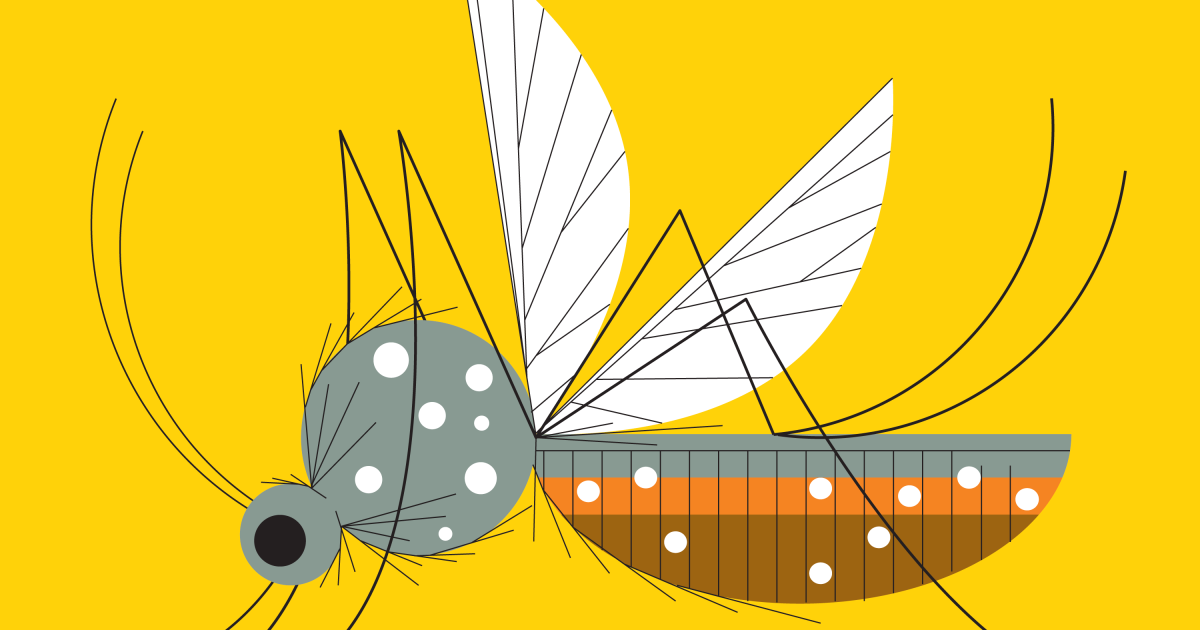The hoot of a great horned owl. The chewing of a mule deer enjoying the grass. The crunch of your feet on the sandy ground. For any hiker, these sounds add to the joy of being outdoors. But the endorphin rush of a great trail can be mitigated by the high-pitched buzz of a mosquito hovering around your neck, trying to get some lunch.
Unfortunately, mosquito season in Southern California began in early May with no end in sight. This period has become “increasingly longer,” according to Susanne Kluh, general manager of the Greater Los Angeles County Vector Control District.
“When I started in the district 25 years ago, we pretty much put our [tracking and collection] tools in mid-October,” Kluh said. “Now, since it stays hot for so long, [mosquito season] “It really goes until the end of November, sometimes the beginning of December.”
Being bitten by a mosquito can lead to an unsightly red, itchy bump and, depending on where it is located, serious illness. Dengue outbreaks have been observed this year in several countries in Latin America and the Caribbean, underscoring the importance of using repellent regardless of where you spend time outdoors.
That's why I've prepared an explanation on how to protect yourself while recreating in Southern California. Trust me, you'll find it helpful when planning your next camping or hiking trip!
First of all, what types of mosquitoes live in Los Angeles?
Too many. Los Angeles County is home to several types of mosquitoes, including several types of culex mosquitoes that transmit West Nile virus, usually in the summer months.
Two of the most notorious are the invasive ankle-biting yellow fever mosquito (Aedes aegypti) and the Asian tiger mosquito (Aedes albopictus), Kluh said.
Since the 1940s, these little idiots have repeatedly arrived in Southern California. And that includes a large infestation of Asian tiger mosquitoes in 2001, which arrived with a shipment of ornamental bamboo imported from China. For years they struggled to establish themselves. Then climate change got worse and Aedes the mosquitoes probably adapted. “Every time they live somewhere, they get a little more accustomed to the climate,” Kluh said.
In 2011, Los Angeles County officials discovered the Asian tiger mosquito in El Monte, raising the alarm because of its ability to transmit serious diseases, including dengue and yellow fever in humans, and heartworm in dogs. , according to the UC Riverside Invasive Species Center. Investigation.
Then in 2014, yellow fever mosquitoes were discovered in Commerce and Pico Rivera, leading to similar health concerns. Despite its name, the yellow fever mosquito does not transmit the disease in Los Angeles County. (But you could if you ever found an infected localhost.)
Both species are now established in the greater Los Angeles area and we have suffered ever since.
These aggressive daytime biters spread serious diseases outside of Los Angeles, such as the Zika virus, which can cause birth defects among pregnant patients, chikungunya, which can cause severe long-term joint pain, and dengue fever, which can cause high fever and body pain and sometimes death. .
But not all mosquitoes are dangerous. Young mosquitoes generally do not transmit diseases and are simply a nuisance. They also make excellent snacks for many birds.
Where do they lay their eggs?
The southern house mosquito, a type of Culex mosquito, typically lays its eggs in fresh or stagnant water, such as a muddy puddle where a seasonal river once flowed. She will lay them all at once, creating a raft of 100 to 300 eggs floating on the surface of the water, according to the Centers for Disease Control and Prevention.
Meanwhile, the Aedes Mosquitoes lay long-lasting eggs that can remain attached, for example, to a dry waterhole. Once they get some rain, those eggs hatch.
“They love to bite people” and can breed in small places, Kluh said. The cap of a beer bottle, left by a reckless camper next to a campfire, is the perfect place to be born in Los Angeles. Aedes girl.
Normally, water trails attract mosquitoes, since that is where they go to lay their eggs. He Culex triambus Enjoy areas along rivers and streams in foothill communities. You can also find the western midge from tree holes (Ochlerotatus sierrensis) on a trail, especially one of nearby oak trees. These guys can carry heartworm, which can be devastating to a dog that hasn't been treated with preventive medicine.
At higher elevations, including parts of the High Sierra, you may even find snowmelt gnats, which breed in puddles left behind when snow melts. They do not carry West Nile virus, but they like to bite people.
Wow, gross! How do I keep them away?
There are several ways to protect yourself from mosquitoes. The most effective of them is DEET.
DEET (chemical name, N,N-diethyl-meta-toluamide) is the active ingredient in many insect repellents on the market. It was developed by the US military in 1946 and then registered for public use in 1957, according to the National Library of Medicine.
The concentration of DEET in a product determines how long it will keep mosquitoes away. A product with 10% DEET will protect you for about two hours, while a product with 30% DEET provides about five hours of protection.
As mosquitoes age, their olfactory system becomes less sensitive, according to Walter S. Leal, a UC Davis distinguished professor of molecular and cellular biology who has researched insects for more than 30 years and studied the effectiveness of DEET and other mosquito repellents. insects.
Therefore, to protect yourself from old disease-carrying mosquitoes, you will need a higher percentage of DEET, between 20% and 30%.
Researchers have developed other insect repellents, but they never last as long as DEET. That said, if she goes to the playground with her son for 30 minutes, Leal says citronella spray, which is distilled from varieties of grass, should work well. But if you're going on a long walk, DEET is the only repellent on the market proven to last up to six hours. “That's why he's so hard to beat,” Leal said.
But is DEET safe?
The short answer? Yes. But that one does come with an asterisk: according to the American Academy of Pediatrics, children should use insect repellents that contain no more than 30% DEET. (Notes that reports of adverse effects associated with DEET are rare and, when used appropriately, DEET does not pose a health risk.)
The CDC recommends using insect repellent, including DEET, if you are pregnant or breastfeeding. Repeated research has found that DEET is safe for pregnant mothers when used as directed.
“[DEET] It is the gold standard,” Leal said.
In his lab, he has tested products with 20% DEET versus products with 20% picaridin, a synthetic compound developed in the 1980s to resemble natural piperine, found in plants used to produce black pepper. Through that work, Leal said he and other scientists had never found a more durable and overall effective product for warding off mosquitoes than DEET.
But DEET has a perception problem because, unlike some repellents, it doesn't occur naturally, Leal said. Audiences, especially the naturally inclined, pause at that.
“They want something that is natural; they forget that strychnine [and] Castor beans are all natural products,” said Leal, referring to poisons derived from plants. “Being natural doesn't necessarily mean it's good, and being synthetic doesn't necessarily mean it's bad.”
Additionally, people often incorrectly associate DEET with the banned insecticide DDT. “This is a big mistake,” Leal said.
There is no chemical similarity between the two. DEET is not a pesticide, meaning it repels insects but does not kill them.
But can't my clothes protect me?
Surely they can. During a hike, wear loose, long-sleeved shirts and pants. You can also invest in clothing treated with permethrin insecticide or purchase a permethrin spray to treat your tent, gear, or clothing (while you are not using them) to help protect you from mosquitoes. Spraying DEET on clothing is not effective, Leal said.
But unless you wear a full-body hazmat suit soaked in permethrin, your exposed skin will still be a target for mosquitoes.
Okay, I'll use DEET. How should I apply it?
When using sunscreen and repellent, apply the repellent last. If you apply sunscreen last, it will cover the repellent and the mosquitoes won't feel it, Leal said.
It is generally most helpful to apply DEET to bare skin: the neck, hands, ankles, or any skin that is visible. It is not recommended to use repellent under clothing.
It's important to remember to reapply the repellent as needed, as even DEET will wear off over time.
Anything else I should know?
A mosquito bite here and there is inevitable, but as long as you're vigilant and embrace DEET, you can keep your meat from becoming lunch.
And keep in mind that the repellent you apply to keep mosquitoes away will also help protect you from other nasties like ticks and black flies. Three pests, one spray!












